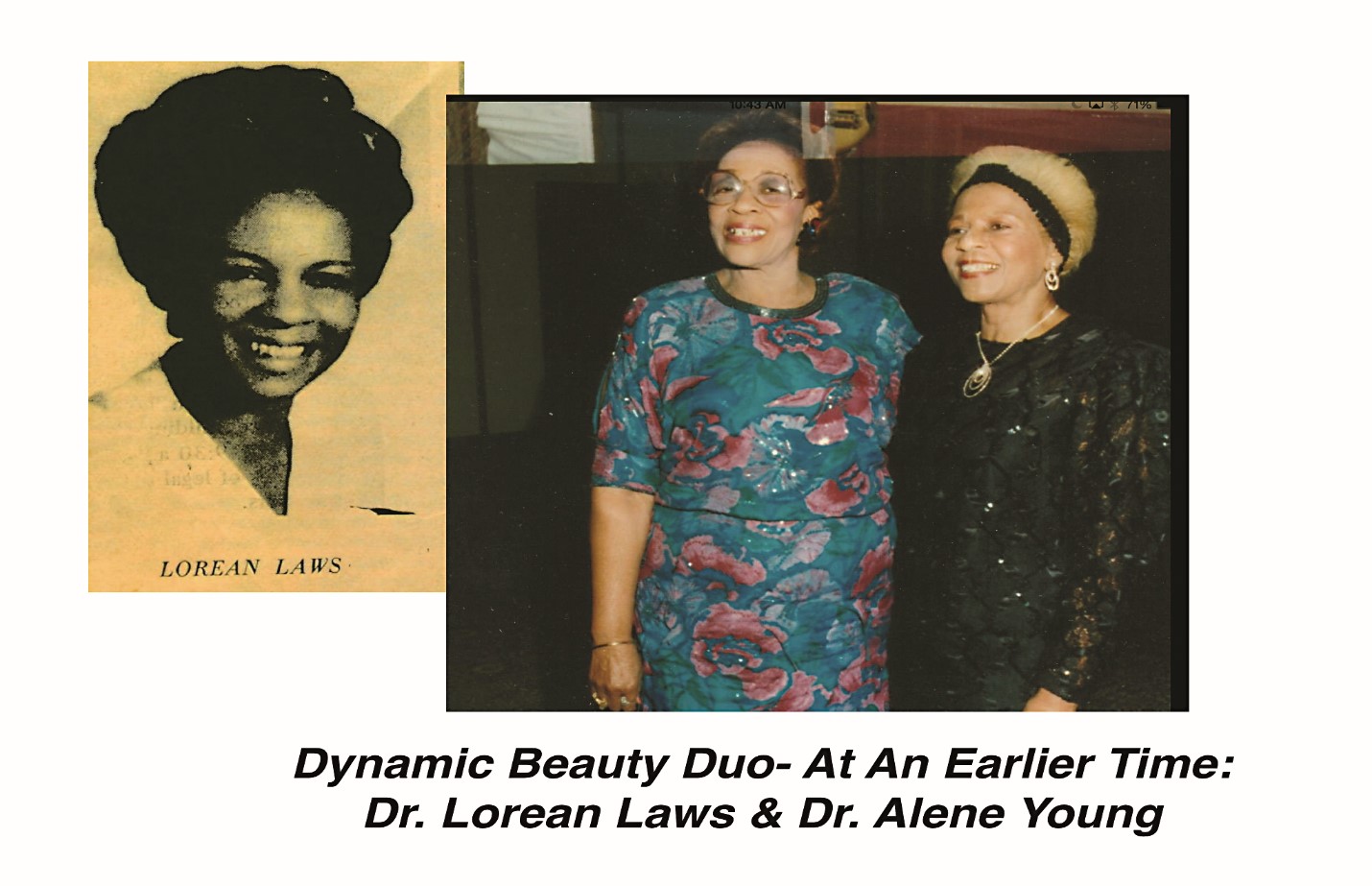A look back and a vision for the next century for one of America’s most historic Black communities
By GARY LEE
In this transition period from the Historic Greenwood District’s first to its second century, we felt it was an apt moment to take a few questions to the village.
And so, we asked: What is Greenwood? What is Black Wall Street? What should Greenwood and Black Wall Street be?
As the Greenwood Historic District’s and North Tulsa’s newspaper of record for 101 years, The Oklahoma Eagle has a mission to take stock of where we are as a community and chart where we are going.
In that spirit, we posed the questions to around two dozen community members. We targeted those who had likely given thought to the issues raised by virtue of their profession or background. We asked men and women, representatives of older and younger generations, many Native Tulsans, and a few others who have adopted the city as their home. Among those we approached: Writer and lawyer Hannibal Johnson; Silhouette Sneakers and Art owner Venita Cooper; The Oklahoma Eagle publisher and lawyer James O Goodwin Sr. In a couple of cases, we captured the perspectives of business mavens who were instrumental in shaping Greenwood in its early years.
North Tulsans are known for spinning yarns about most anything anytime, but we suspected that these questions would inspire particularly keen insights. And they did!
The more we listened, the clearer it was that perspectives on the questions either focused on Greenwood’s past or its present and future.
Johnson, for example, was one of those who emphasized the community’s history.
“When I talk about Greenwood, I talk about how Black people more than 100 years ago were extremely successful in economics and entrepreneurship against great odds. That history is a big part of what this community is about.”
Others were more inclined to view Greenwood and Black Wall Street from a contemporary angle.
“If you talk about Greenwood, the potential is rich,” said Damali Wilson, a nonprofit executive with World Won Development, a publicist and native of the neighborhood. “But at the moment? Two blocks of businesses are all we got.”
Beyond the division between the look back and the look forward, folks talked about Greenwood and Black Wall Street from different angles. Some keyed in on the physical landscape of Greenwood and the broader community. Others spoke about the demographics.
Still, others focused on entrepreneurship.
And finally, some waxed about the spiritual and philosophical inspiration of what is arguably one of the most discussed Black enclaves in the United States. To bring you the range and richness of perspectives, we decided to share the viewpoints from those four perspectives.
We provide two voices in each category, including one looking back and one looking towards the present and future. For space reasons, we narrowed the perspectives we presented to nine people. Limited space also required us to edit the interviews.
The Visionaries
Ottoway W. Gurley: Constructing the foundation
An Alabama native and Black entrepreneur, O.W. Gurley moved to Oklahoma from Arkansas in the late 1880s as part of the land rush. He was only in his mid-twenties but has been widely credited with playing an instrumental role in launching of Tulsa’s self-sustaining Black community in the Greenwood section – where the city’s racial segregation division line began.
Records of Gurley’s words are scarce, but his actions define his vision.
As the settler and rising entrepreneur surveyed the dusty paths so fledgling the streets did not have names, we imagine him thinking, “this community is an open book, and I’m going to write the first pages.”
In 1906, he settled in the newly incorporated city of Tulsa and purchased 40 acres of land, which was “only to be sold to colored.” One of his first businesses was a rooming house located on a dusty trail near the railroad tracks. Among his early tenants were Black migrants fleeing the oppression in Mississippi. The house’s road was located, the story went, and was given the name Greenwood, apparently after the city back in Mississippi.
Gurley also built three two-story buildings and five residences and founded Mount Vernon African Methodist Episcopal Church, one of the few original churches in the Greenwood footprint.
While the early role Gurley played in the community is well documented, some historians point out that Blacks had come to Oklahoma decades earlier as slaves to Cherokee, Creek and other Indians and eventually gained status as Freedmen.
According to records, in any case, Gurley and other Blacks who moved to the area from out of state began opening shops, boarding houses, and other small businesses around what would become the intersection of Archer Street and Greenwood Avenue.
The enclave of businesses and residents grew so quickly that when Booker T. Washington visited the area in 1916, he dubbed it the “Negro Wall Street,” as reported in our legacy newspaper, The Tulsa Star. Although hindered by the 1921 Race Massacre, the Historic Greenwood District would continue to burgeon organically into an all-Black ministry – through the 1940s and 1950s through the decades of growth, there was never a blueprint, design, or city plan for Greenwood.

Francell Abdalla: Fulfilling the dream
However organic the creation of Greenwood was, Francell Abdalla firmly believes that putting the neighborhood back on a rightful course calls for a “master plan.”
As a critical organizer for Team Alchemy, a group of developers bidding to repurpose the Greenwood-based Oklahoma Ironworks Building, Abdalla has led the crafting of a new plan for the complex – and the entire community. The plan, under review by city officials, is vying with another proposal by a set of developers for renovation of the Ironworks building. Abdalla came to Tulsa three years ago to work for a nonprofit and is now director of the Tulsa Economic Development Council’s Re-Build program. In an interview with the Oklahoma Eagle, she gave details of Team Alchemy’s blueprint for a new Greenwood.
Abdalla stressed that the team developed the based on extensive input from residents and business owners in Greenwood. The strongest sentiment behind it, she said, is the sense that Black Tulsans should regain ownership of the land and buildings in and around Greenwood. Although largely Black-owned in its early days, most of the land and buildings in Greenwood are now white-owned.
Her report
“Greenwood was a concept that was only partially fulfilled. O.W. Gurley understood how to build community by leveraging the physical environment to do that. We went back to what Gurley and others had established and took their early framework as a launching pad to revive Greenwood and redevelop the rest of North Tulsa.
“In the Northeast section of the original Ironworks complex – the part that faces North Tulsa, we’re proposing a 42-story tower. It would be mixed-use: multifamily housing, first floor retail, a hotel, urban dining, and more. We envision this as a place that people not just in Tulsa but around the globe will point to and say this is not only where the possibility was birthed but where possible also has a future orientation. That’s why we call it, The Beacon.
“We also want to take that 100,000 square foot Ironworks Building space and rescue it in a way that creates a new infrastructure for a Black economy, a new infrastructure around innovation, tech, Black creative talent, and artisans to have those same types of opportunities that the early occupants of the Ironworks had.
“At the southern end of the site, we want to rebuild Black Wall Street to re-create Black Wall Street’s main street and economic center. We intend to create workplace stations that would only be open to local Black retailers and small business owners,” she said.
Team Alchemy’s concept for the new Greenwood is still in the brainstorming phase. It will be vetted by Tulsa officials and, if chosen, likely to undergo adaptations.
“It excites us to offer the opportunity to create individual wealth accumulation,” Abdalla said. “You would have Black ownership at the business level in the retail and Black ownership in the equity group and request opportunities to manage or own the small business opportunities.
“It gives us a chance to restore not just individual wealth but an actual Black economy.
“And that opportunity would extend into North Tulsa. There is nowhere else to develop in the city of Tulsa… going North is the only option.
“The land in North Tulsa is rich, not only fertile but rich with people who have the capacity to do is North Tulsa. We believe in turning towards North Tulsa, we are opening the door to opportunity.”
The Entrepreneurs
John the Baptist Stradford: Setting the bar for Black Excellence
It took more than one man or woman to give Greenwood the moniker of Black Wall Street. The legion of business owners who rose to create this North Tulsa neighborhood as one of the most successful Black business enclaves in the U.S. is the stuff of legend. They included shop owners, barbers, haberdashers, jitney purveyors, lawyers and other professionals, bootleggers and others.
No single person embodied the drive, principles, and the ability to seal the deal more than J. B. Stradford. Like Gurley, he moved to the Tulsa area in the late 1800s and immediately began to invest land and launch businesses.
Stradford’s had a penchant for making bold business moves. Using the newly formed Greenwood neighborhood as his stomping ground, he became a real estate kingpin. His empire would eventually own two dozen rental and rooming houses, including a 16-room brick apartment building, a couple of pool halls, a shoeshine parlor and a bathhouse. His private home, valued at $125,000 (around $3 million in today’s dollars), was naturally a place of luxury unparalleled in the Tulsa of that day.
But his crown holding was the Stradford, a 54-room luxury hotel at 301 North Greenwood Avenue. According to the Notable Kentucky African Americans Database, when the hotel opened on June 1, 1918, it was the largest Black-owned hotel in America. More remarkable than the size was the grandiose décor: chandeliers graced the lobby; each room was outfitted with the latest in beds and furnishings.
More than a place of lodging, he envisioned Stratford as a place of what has come to be known as Black excellence. He described it as “a monument to the thrift, energy, and business tact of the race in Tulsa [and] to the race in the state of Oklahoma.”
By establishing a superior business in the midst of the new community, Stradford became one of the critical definers of Black Wall Street. He and a handful of others gave the district the reputation to carry forward for a century and further.
Even though the hotel would be burned to embers in the 1921 Race Massacre, and Stradford was forced to flee Tulsa, the shadow of his legacy still falls on Black Wall Street.
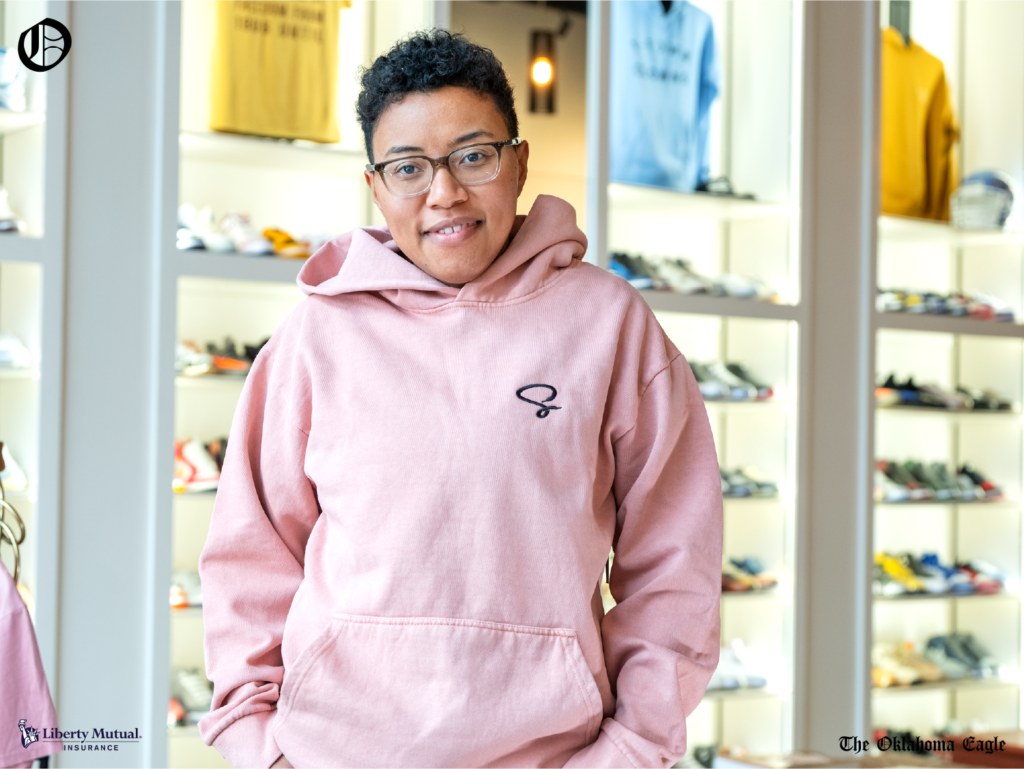
Venita Cooper: Developing a modern Black Wall Street ethic
Venita Cooper was trained as an educator and came to Tulsa to work as a school administrator in the mid-2000s. Fate and disillusionment with working in schools led her to a wholly different career.
A century after the massacre destroyed Stafford’s dream, Cooper opened a retail shop just around the corner from where his hotel stood. The 30-something had been looking for sneakers and having trouble finding a store that offered what she wanted. So, she opened Silhouette Sneakers and Art.
Five years later, Silhouette is heralded as one of the most alluring retail shops in the Historic Greenwood District. It offers a little something for everyone: an x Cirque coffee tin – $12; BWS bomber jacket – $99; Adidas Yeezy Boost 700 – $620.
“Of course, the legacy of Black Wall Street has been my inspiration,” Cooper said. “But in this era, I have also had something that Tulsa offers that very few other communities do: Access. I could talk to the mayor, to representatives of the largest foundation in the city, to organizations that train in business skills.”
For Cooper, Greenwood was always foremost about creating a space for Black people to make and build on good fortunes.
“What the” founders wanted was to build opportunities,” told the Eagle. ‘They wanted to make an opening where Black businesses could thrive. If it had been up to them, the whole of Tulsa would have been a kind of Black Wall Street.”
In her view, the most significant distinction between today’s entrepreneurs and the creators of the original Black Wall Street is that they are not bound by the Jim Crow era laws that confined their clientele to the Black community.
To the contrary, Cooper, who is mixed race, takes pride in building a diverse clientele at Silhouette.
“One of the reasons I love sneakers as a product is that they appeal to everyone regardless of race, gender of age,” she said. “So, we’re about taking advantage of that universal appeal and opening our doors to everyone.”
The inclusive vibe reflects who she is.
“I have never been part of a segregated community,” she said. “And I would not feel comfortable in one.”
Cooper feels that inclusivity is the fulfilment of the dream of the early pioneers of Black Wall Street.
“Segregation was forced on the original entrepreneurs of Black Wall Street,” she explained. “But I don’t think they ever envisioned being restricted to segregated Greenwood. They always had a grandeur vision. I feel lucky as a business owner to be able to help make that grander, more inclusive vision happen.”
Cooper says that she has benefited from the standard of excellence that was established by Stratford and other Black Wall Street entrepreneurs of this and later generations.
“I and my peers are able to take the spirit of the creators of Black Wall Street and run with it,” she said. “I’m lucky to be based in the original BWS neighborhood. But that’s not a requirement. I feel that you can take that spirit and make it a success anywhere in North Tulsa or elsewhere in the city.”
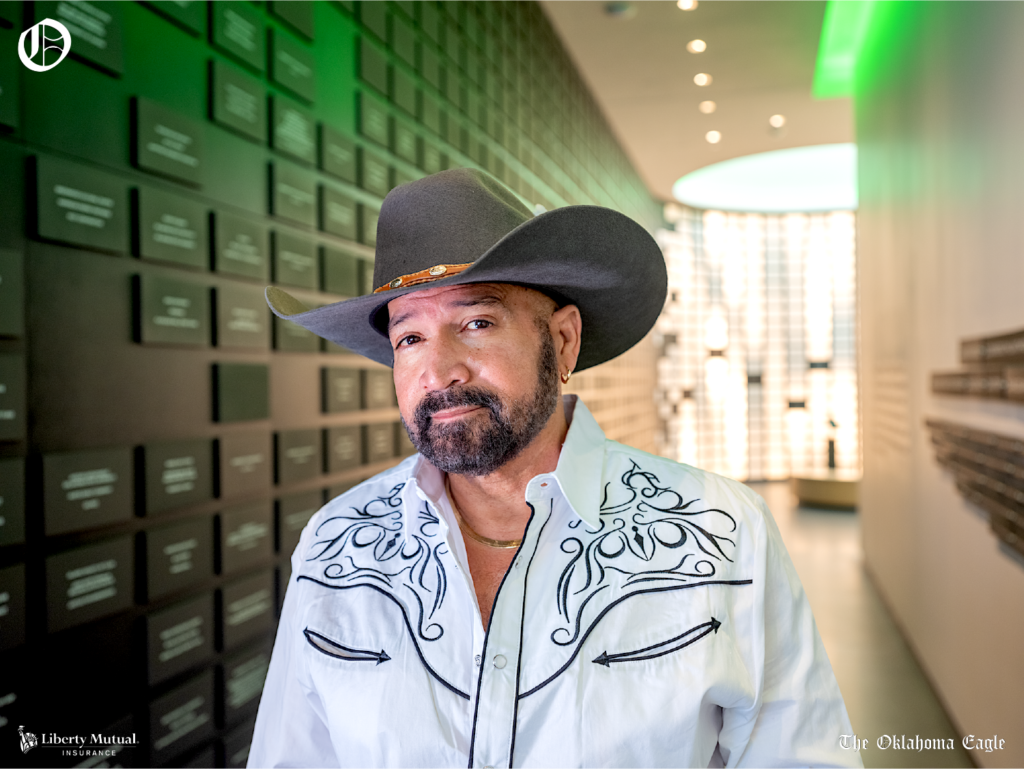
The Cultural Anthropologists
Eli Grayson: Honoring the community’s roots
Eli Grayson is an entrepreneur, retired designer and Creek Freedman. He is descended from Freedman who came to Oklahoma in the early 1800s and were given allotments of land in the area that would become Tulsa under tribal agreements reached after the Civil War. Grayson was raised in Mississippi and earlier worked as a designer in California but calls Tulsa home. He is an avid history buff with a keen knowledge of early Tulsa history.
When it comes to telling the narrative of Tulsa’s Black community, Grayson feels it’s important to keep the myth separated from the reality.
While the story goes that Gurley and other Black settlers came in from out of state and started building Black Tulsa, Grayson told the Eagle, the reality is that Blacks were in the area that would become Tulsa long before the so-called “state’s Blacks” arrived.
“Blacks were in what is now Tulsa way before the state was incorporated, and before Blacks started coming in from other states after the Civil War,” Grayson said.
He was referring to the Freedman, Blacks who came as enslaved people to the Cherokee, Creek and other Indian tribes who were forced to leave their land in the South and re-settle in Oklahoma. After the Civil War, the tribes were required to give tribal rights to the Blacks. They were called Freedmen.
“So, what you had way back in the 1800s was a community of a few thousand people that consisted of Indians, white Indians, Black Indians and Freedman. It was a mixed bag,” he said.
“We don’t know exactly what the demographics were. But we know some things that they help us get a picture of early Black life in the area that would become Tulsa.
“For one, long before statehood and before the 1901 town site act, the Perryman family started a post office that would allow Tulsa to become a town. “The Perrymans were among those Indians who enslaved Black people.
We also know there was a small community of Creek Freedmen in the late 1800s very near what is now Greenwood and Archer called Hodges Bend. Those Creek Freedman probably worked on the railroad but probably wanted to avoid going into Cherokee Territory. so, they lived on the side of the Creek Nation…
“Finally, while the land going North from Greenwood has become a Black community, it was Cherokee Indian territory, and they still consider it their land. So, when Cherokees hear Blacks complaining that whites took their land, they are offended because it’s Cherokee land.”
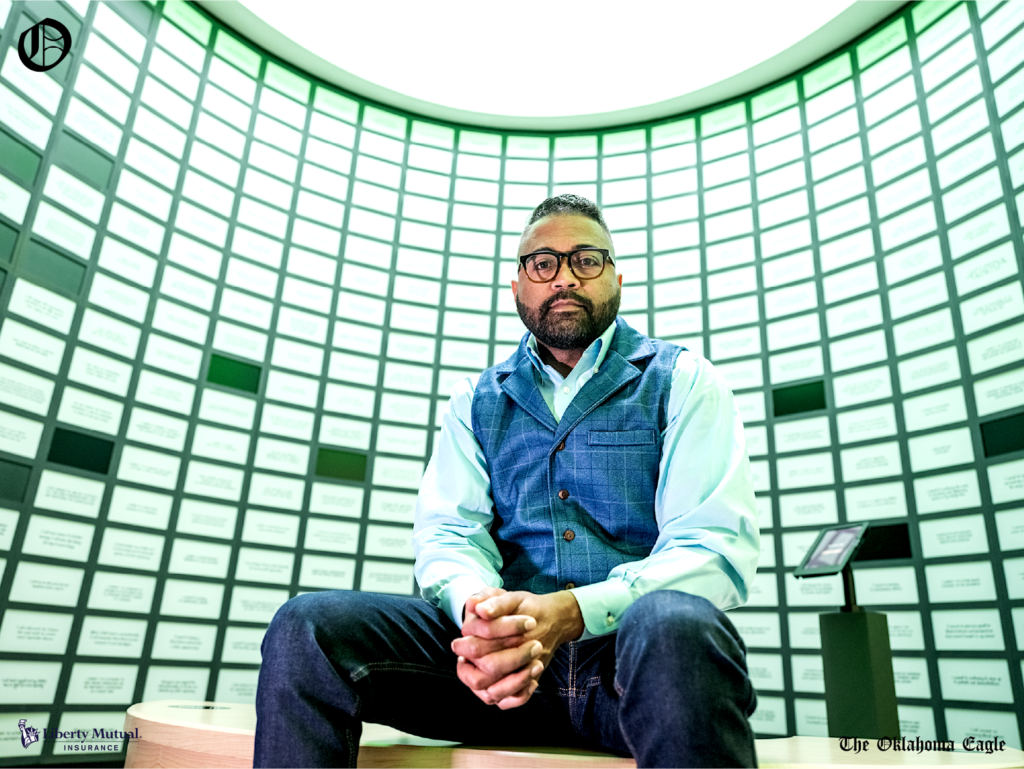
Phil Armstrong: Recognizing the new demographics
Phil Armstrong, interim director of the Greenwood Rising Black Wall Street History Center, has spent the past few years thinking about Greenwood, including its glorious past and its future. Originally from Ohio, Armstrong relocated to Oklahoma for work in the 1990s. When he ponders the current make-up of the Historic Greenwood District and North Tulsa, he sees it as a racially-mixed community.
“We will never be able to recreate Historical Greenwood in its entirety,” he told the Eagle. “It’s changed. And thankfully it does not have the restrictions that Jim Crow forced on it.
“What we’re seeing today is that Greenwood and North Tulsa are more inclusive. It does not surprise me that there are whites, Hispanics, and others that have become part of what’s going on in this area. I am an integrationist as are many in my generation. So, I am okay with that.”
Armstrong feels that the new mix of Greenwoodians will be important in the success of entrepreneurial endeavors in Greenwood and across North Tulsa.
“In this era, the Black community – and especially entrepreneurs are not going to be able to prosper with only Black dollars,” he said.
“You’d be limiting the ability of Black people to do well if you said we only wanted Black people to live or shop here.
“But the new Black Wall Street businesses are going to survive and thrive because white people, Hispanic, young, old – a broad mix of people are going to spend their money in them.
“If we were Atlanta or L.A., we could probably survive off Black dollars and make a pretty good living. But this is Oklahoma. There is not going enough wealth to drive a business from just one segment of the community. It would limit the ability of Black people to do well if they said they only wanted Black people to live or shop here.
“The good thing is that the development going forward in the next three to five years is going to have a majority black minded focus.
“We’ve reached at stage where people are saying yes, we need to work to bring back what was there historically. Whites and others understand that this Is part of what we refer to as reparations.
“What I would agree to and what I think is the narrative being pushed is that as we are seeing the modern-day development of Greenwood that there is an emphasis on Black home ownership and Black business development.
“And you have the whole world leaning in with eyes focused on Tulsa. And they are asking ‘as you are growing, Tulsa what are you doing for that historic Black community?’”
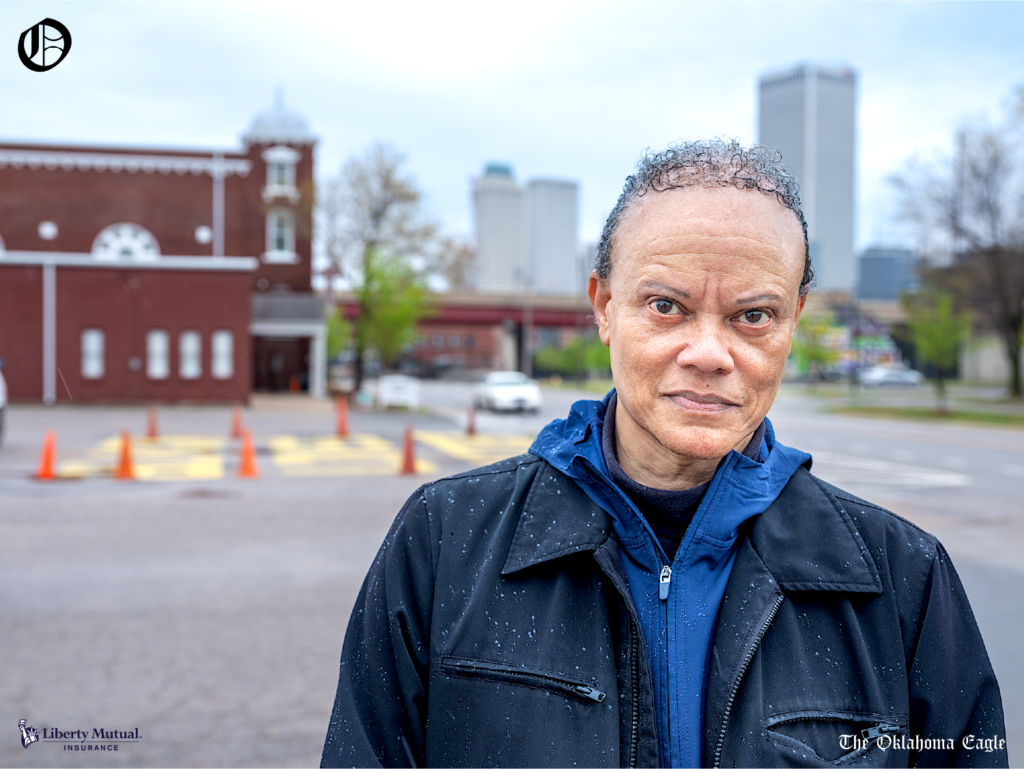
The Philosophers
Hannibal Johnson: Giving Greenwood’s history its due
Hannibal Johnson is an attorney, educator, former Eagle columnist and author who has devoted his career to telling the story of Greenwood and North Tulsa. He wrote, “Black Wall Street- from Riot to Renaissance” and several other books focusing on Tulsa’s Black community.
He shared his perspective with the Eagle:
“When I talk about the Greenwood District, I am talking about the historic and geographic area affected in which at least two highly notable things happened. One is the emergence of national renown Black entrepreneurship, and the other is the defamation of that show of prowess in the massacre of 1921 and the remarkable rebuilding.
“Greenwood was a community of necessity. That’s the irony – that Black people fighting for integration were forced into segregation and required to create an economic community of their own. I use the metaphor of Black folks approaching the gates of economic opportunity in white downtown Tulsa and being turning away. They had to make an economic detour and came back into the Greenwood community. And their dollars were essentially trapped in the community.
“My focus when I talk about the Greenwood District is what happened in this geographic space. But the emphasis is on the people who made what happened, happen. So, I also talk about the indomitable human spirit that is the legacy of the originals in the Greenwood District.
“And then I underline the Black Wall Street mindset. And that allows us to be unmoored by the geography yet inspired by the legacy that these people created. They created something remarkable by doing what they did in the face of great odds.
“Part of our goal should be to educate generations of young Black children to understand that entertainment and sports are not their only options in terms of professions and careers. Black Wall Street shows that Black people were extremely successful in other vocations and professions. And they can be inspired by what happened in the space that is called the Greenwood District.
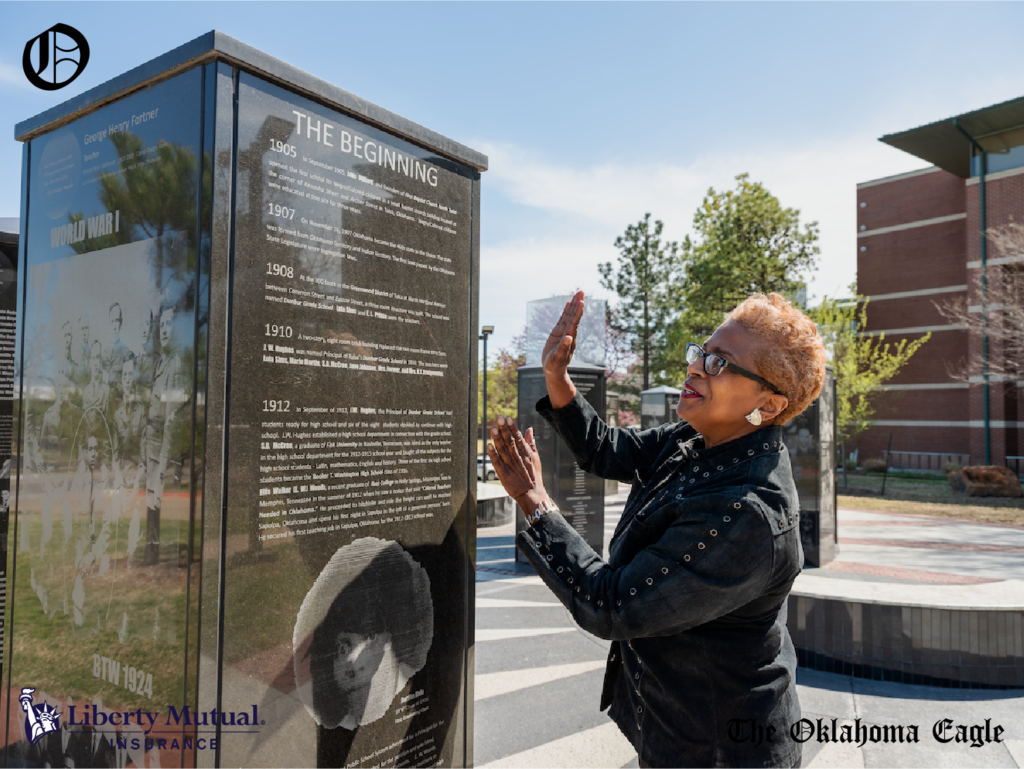
Burlinda Radney: Looking at 2075 and Beyond
Burlinda Radney has lived and worked in Tulsa for over three decades. She came to the city to work as a geophysicist in the oil and gas industry and is now a commercial and residential real estate professional. She is also a strong advocate of Greenwood and North Tulsa and expresses her dedication to that cause by service on the Greater Tulsa African American Affairs Commission and other boards.
Radney shared her views on Greenwood in an interview with the Eagle.
“It’s impossible to talk about the future of Greenwood without being clear about its early history. Greenwood was formed and intended by people who were – in their way and time – actively pursuing an act of political sovereignty.
In just barely 60 years post emancipation, you had a community of folks from all walks of life who were very rooted in the understanding that they were living and working to build a freedom colony.
“And 100 years after the massacre, when I think about what Greenwood was at its inception, was at its midlife and is still today, what makes this community different from other African American communities is that for better or worse, being in Indian territory gave the opportunity for African descended people to move about freely to pursue happiness in a way that the constitution alludes to but had been kept from Black people since the nation’s founding.
“The fact that these were free people – and freedom loving people is essential. When I think of what Greenwood is and what Black Wall Street came to embody is something that was done by the free people of the freedom colony of Greenwood. And I use all of those extra frees deliberately. Because Black Wall Street was just one thing that those people did. They could have done many things.
“When we consider what Greenwood could be in the future, we must remember that the people of this community stood all alone in the world for 99 years while a malicious unidirectional effort to wipe it off the map. And still, it survived. So, we have resilience.
“What do I think Greenwood of the future is? We must answer the call of what our land was intended to be: a place where striving and Black excellence thrive and where Black people live happily, prosperously, and free.
“One of the real challenges that we face is how do we confront blight and understand that blight is not synonymous with Black
“And similarly, we have the challenge of wresting from the hands of government organizations – whether they be city, state, or an urban renewal authority – control of our land and putting it back into the hands of our community so that it can decide its own destiny.
“I often say I live in 2050 or 2075. It’s not being cute. It’s acknowledging that people in the glass buildings downtown – are in 2050 or 2075.
So, we have to be there, too. And if we must have a master plan. That plan must be one in which we envision love and experience ourselves in that landscape we will not be in that landscape in the future.
“I don’t think we can achieve anything, unless we faithfully believe that there will be black people in this landscape a hundred years from now.
“And what exactly that will look like is something for the free people of Greenwood to define for themselves.”
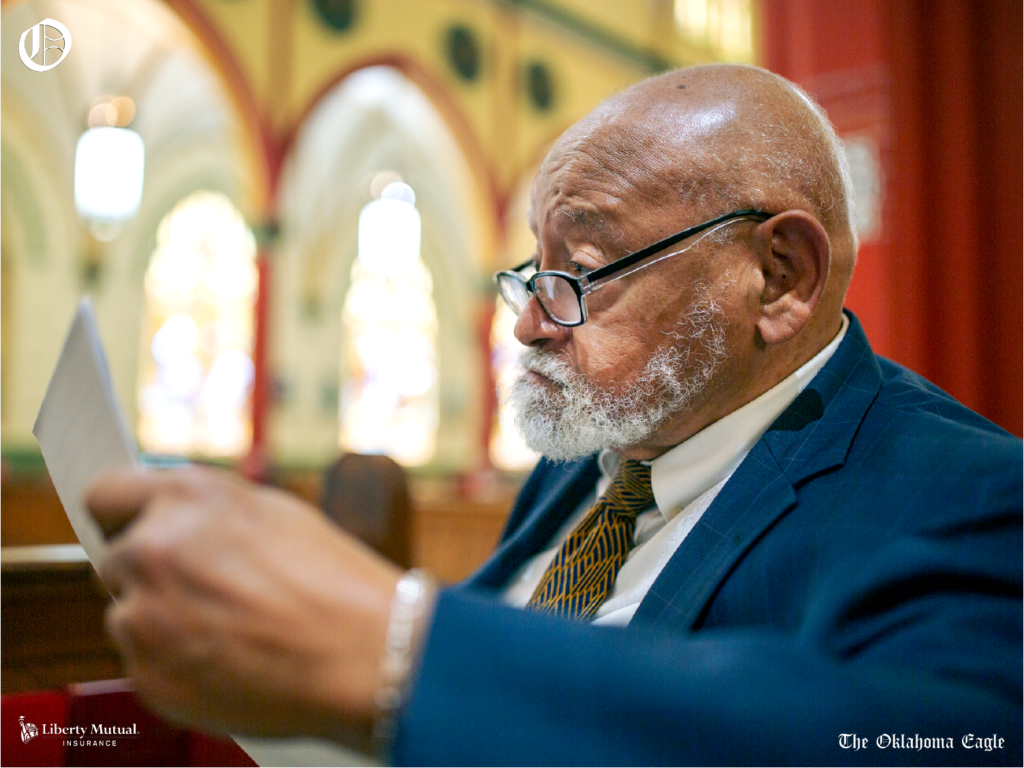
James O. Goodwin: Experience and faith are our motivations
James O. Goodwin is a lifelong Tulsan, a renowned attorney, community leader and publisher of the Oklahoma Eagle, which is based in the Historic Greenwood District. Goodwin is a fervent advocate for the reconstruction of Greenwood and for the preservation history and legacy.
His perspective:
“Greenwood is a testament to the ability of Black people to face incredible adversarial conditions head on and succeed and continue to push forward and create a record and legacy of successes. If you look back over the history of the neighborhood it will show that the greater the obstacles that were placed before the community, the greater were the successes. Just consider the post slavery legacy, the history of Jim Crowe, the bloodshed of the 1921 Race Massacre and the ability of the community to overcome all that. The most dramatic example of this is the swift rebuilding of Greenwood following the devastation of the 1921 race massacre.
“That record of resilience is not a myth. It’s the reality of the Greenwood that I grew up in and it’s the reality of Greenwood today.
“The lyrics of James Weldon Johnson’s spiritual Lift Every Voice and Sing captures perfectly what the spirit of Greenwood is about.
Sing a song full of the faith that the dark past has taught us
Sing a song full of the hope that the present has brought us
Facing the rising sun of our new day begun
Let us march on till victory is won
“In order to keep that spirit going, we need to have and preserve a record of the tragedies that occurred and how they were overcome. Heliographs and other exhibits of Greenwood’s past; something to show current and future generations what the history of the neighborhood was. There have been some efforts to do this. The Greenwood Cultural Center has been doing some of this work. The new Greenwood Rising does some of this work, but we can go further.
“The challenges continue. In order to face them and keep moving forward we will need to continue to draw from our legacy and from the spirit on which Greenwood was created.
“But as much as spirit, we will need capital, assets, and investment. You must have the ability in the Black community to create wealth and build on it. There are already some community entrepreneurs who have launched endeavors along these lines. We need to support those initiatives, create more opportunities, and follow through with them.
“This rebuilding should be centered and grounded in the Greenwood community. It can go further to other corners of the city. But based on our legacy, I have no doubts that Greenwood will continue to mount a record of successes.
ABOUT THIS SERIES
“Of Greenwood,” is a 10-part investigative series of The Oklahoma Eagle that examines key legacies that helped to shape our community as the “Black Wall Street of America.” Our series receives support from Liberty Mutual Insurance. The Oklahoma Eagle is solely responsible for this content.
>> May 2021: Tulsa’s Green Legacy and the role agriculture played in our development
>> July 2021: The power of Greenwood’s circular dollar
>> August 2021: The rich legacy of Tulsa’s Black entrepreneurship
>> September 2021: Goin’ to worship: Sunday is a lifeline of Greenwood’s legacy and future
>> October 2021: Health care: Carrying on ‘legacy of (Black) physicians’
>> November 2021: Greenwood: A community devoted to education
>> December 2021: Music: From Tulsa to Broadway and back
>> January: Sports: The North Tulsa Sports Machine
>> February: Today’s political leaders carry the torch for justice and equity
To read the series, view historical photos and watch videos, visit


